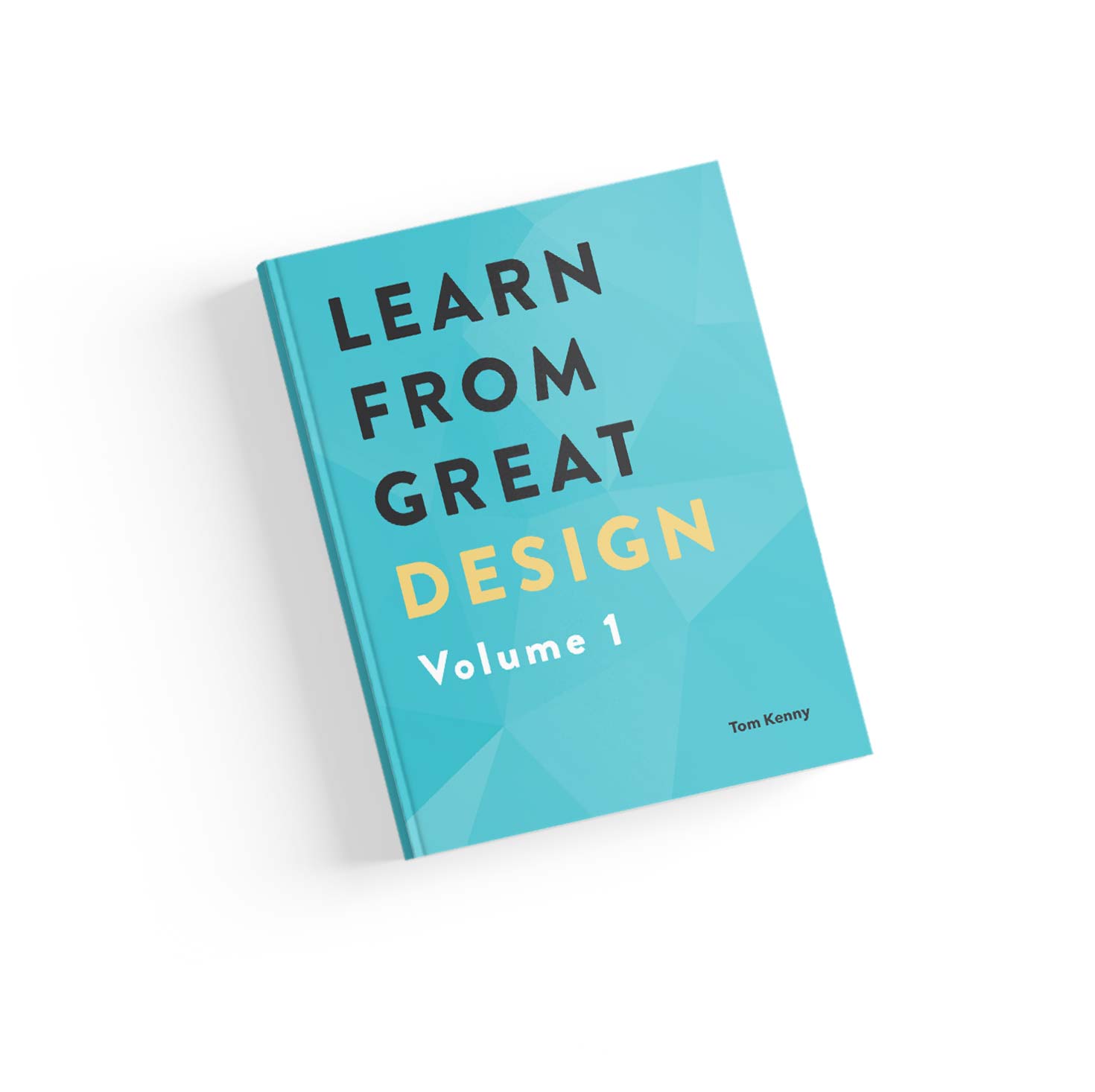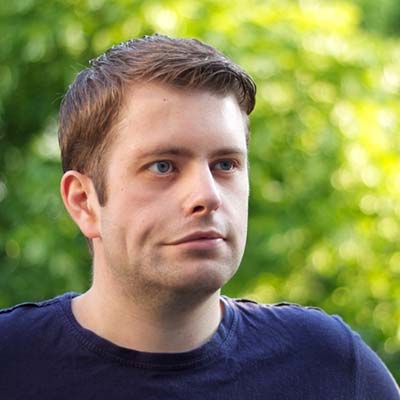I hate getting up early. It doesn’t come naturally to me at all and I would much rather work late at night until 2am because I’m a night owl.
However, all the advice I’ve heard and read is that creativity flows more freely in the morning so instead of thinking “that’s nice but I hate waking up early”, I decided to test it for myself, thinking it I was just fine watching the clock tick into the early hours of the morning.
I’m pleased to say that working in the morning, as soon as I get up, has been one of the biggest improvements I’ve made to overcoming creative block. Not only that, but getting up earlier to get more done sooner feels great. I love the feeling of completing a major task before most people start their day at 9 o’clock. It feels great!
As great as it feels, it isn’t easy for night owls like me to get on track and stay on track of getting up early. My goal here is to show you how I’ve done it, so you can get the most out of your daily creative powers by getting up earlier and conquering your work free of creative block.
Do Your Most Important Work First Thing
Whether you commute into a company office or walk a few feet into your own home office, make sure you get the most important thing done first. This requires knowing what your most important thing is, so the best way to end your day is to know what you need to do tomorrow. You don’t want to waste any of that important brain power trying to figure out what the most important task of the day is.
When you combine getting up earlier and doing your most important task of the day first, you get this amazing sense of achievement that can happen before most people have even started working.
Visualise Your Tasks in Order of Importance
I use a simple way of dividing out my tasks for the next day.
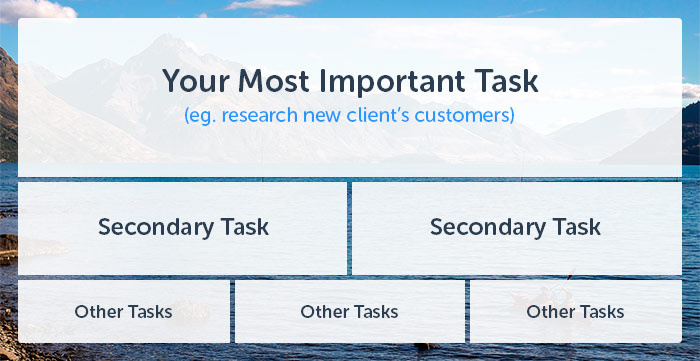
I’m a designer, so I like to make everything as visual as possible. Don’t just create a boring list, write your task on a piece of paper using this format and place it on your keyboard when you finish for the day to give yourself an easy overview of what you need to get done as soon as you approach your computer the next morning. No thinking required in order to get up and running for the day.
Experiment
Adapt the visual format to meet the needs of how you work. You may find that doing your most important task in the morning followed by less important tasks in the afternoon a better way of working. For me, it depends on the day. Experiment to find out what works best for you.
Either way, the note on your desk when you arrive to your workstation in the morning lets you know what you need to get done first thing.
Why First Thing?
Think about a typical Friday. You’re looking forward to the weekend because you’ve had enough of doing work, at least most of the time. You need a break. The same applies to each day. By 4pm you’re thinking about going home or getting to the pub because you’ve been doing one thing for the entire day. You need a break (and you know the importance of taking breaks).
That means one thing: you get more tired as the day goes on and your creativity fades with it. You need to do the most important tasks first, when you have the most energy and the creativity flows.
3 Steps for Getting Up Earlier
These techniques work whether you work at home or not as even getting up at 6am to work on a personal project before you head to your day job can be a huge help.
1. Make Small Gains
If you would like to get up earlier but find it difficult, you’re going to have to start smaller.
Let’s imagine you get up at 9am everyday but you would like to get up 2 hours earlier. As you’re used to that 9am start, you’ll find it difficult to make a cold hard switch to 7am without building up to it gradually.
Habit expert, James Clear, recommends making small gains in order to make it easier to form a habit, which you’ll need to do in the next step.
Your motivation will fluctuate, so you need to make small increments so even if motivation is low, you can still make progress with little effort.
2. Form a Habit
In The 4-Hour Body, Tim Ferriss explains an interesting technique to lose weight used by Evernote CEO, Phil Libin, simply by recording his weight in a spreadsheet and nothing more other than keeping track of the resulting graph.

Just the very act of recording his weight on a graph helped him lose weight without making any active effort to change his eating habits. Phil comments that he couldn’t pinpoint the exact changes he made but that he says he “suspects it affected thousands of minute decisions that I made over the time period, even though I couldn’t tell you which”.
Losing weight and getting up earlier are two entirely different goals of course, so this approach won’t work exactly the same for what we’re trying to achieve here but we can apply the same thinking to get ourselves out of bed earlier.
Unlike Phil, you still need to make a conscious effort to go to bed at the right time so you can get up at the time you want, depending on the amount of sleep you need. This is something you’ll need to test and figure out yourself because everyone is different.
With that in mind, take this approach and record the exact time you get up everyday. Recording your times on a chart will help you see how much progress you are making and spur you on to keep going.
3. Make it Automatic
For the first 66 days on average or so, you’re going to have to pay attention to doing this while you are building the habit of waking earlier and it’s ok to miss a day or two now and again as long as you pick yourself up quickly. Obviously aim not to miss a day but sometimes that isn’t always possible. Just be aware and get back on track.
Apps I Recommend to Track Progress
You don’t need to create your own spreadsheet with complicated ways of creating graphs like Phil Libin did to create the graph from his story. There are just two very simple to use apps I recommend to get you started.
Coach.me
I’ve experienced the benefits of getting up early so I use a free app called Coach.me to record my progress and keep me on track, or get me back on track when I fail as you’ll see below. At a basic level, you simply create a goal and mark it as done for the day if you achieve it but there are graphs to help you track your efficiency.
Here’s my stats from Coach.me:
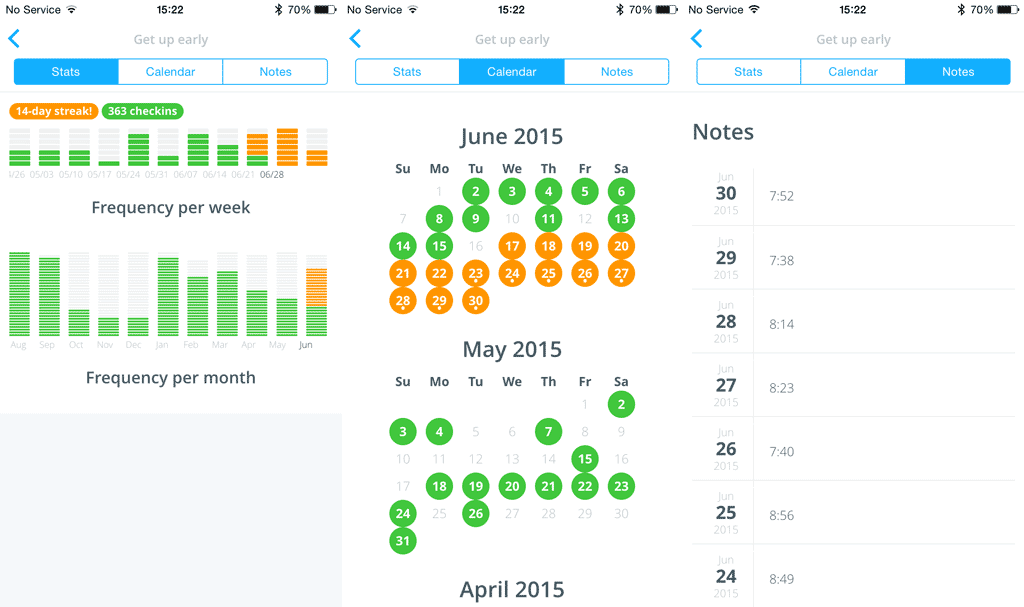
As you can see, I’m on a 14-day streak but I doubt I would be if I hadn’t been tracking my progress. Prior to the month of June, you can see the number of times I achieved my goal was decreasing, so I knew I needed to get back on track.
“Get up early” for me is defined as anytime 9am at the absolute latest at the moment while I’m living a nomad lifestyle for a year. My ideal time is 7am and as you can see from my recent notes above, I’m all over the place and nowhere near.
The sudden drop in October, November and December were the first three months of travelling. I realised in January that I was too much in holiday mode and snapped out of it to get back to a good level.
Sleep Cycle
Sleep Cycle is an alarm clock app that tracks your sleep, including the time you go to sleep, the time you wake up and even the quality of sleep.
It’s worth buying for the quality of sleep alone but we need to primarily use it to track when we go to bed.
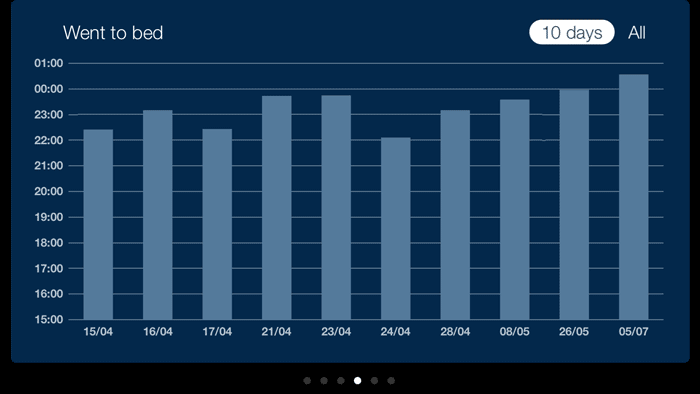
It’s a shame you can’t view a graph of the time you wake up as that would save me from having to enter in notes in Coach.me, which I’m not very good at remembering.
I’ve not used Sleep Cycle much and not at all while traveling but I still highly recommend it.
It’s All about Habits
You have to get into the habit of recording your habits every day. I’ve been tracking how often I get up early for almost 2 years now, so it’s become second nature to open the Coach.me app and swipe my completed tasks to done (my other daily habits are write, exercise, work on personal project, no chocolate and meditate).
Getting Up Earlier is Like Climbing a Mountain on a Cool Morning on a Hot Day
I like to think of it like going for a hike up a mountain on an extremely hot day. You know it’s going to be very hot in the middle of the day and the afternoon when the sun is at it’s most powerful. Climbing that mountain at that time is going to require a lot more effort.
If you head up the mountain first thing when it’s much cooler it’s obviously going to be much easier. Your most important task (the mountain) of the day probably is going to be one of your most difficult, or at least most involved, so you need to use every advantage you can to make it as easy as possible to let the creativity flow.
Sure, the sun is less potent in the evening but you’ll be out of energy doing less important tasks and it’s more treacherous to walk up and down a mountain when it gets dark.
Get ahead of everyone else. Try getting up earlier. It could work wonders.
